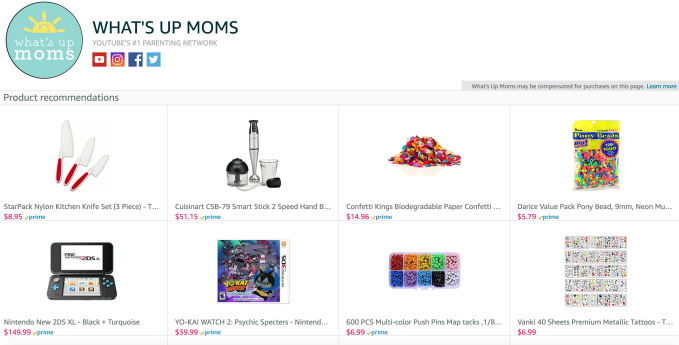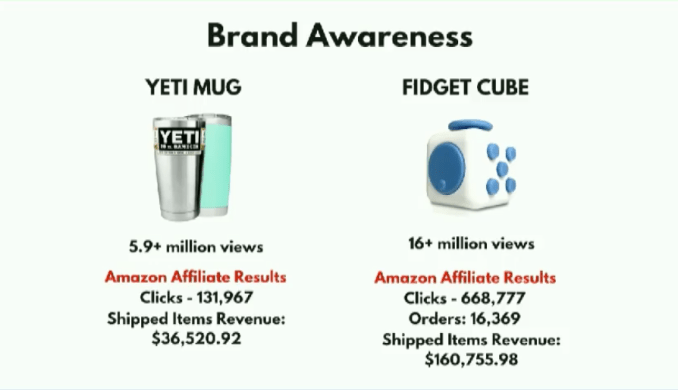Amazon is expanding its Influencer Program beyond YouTube to also include Twitter and Instagram, the company announced on Thursday. First launched into beta earlier this spring, the program initially targeted YouTube stars by offering them a way to make money from the products they promoted in their videos through an affiliate-like relationship with Amazon.
Many of today’s influencers regularly tout products in their online postings, whether that’s YouTube videos, Instagram, Facebook, or elsewhere.
The larger idea behind Amazon’s program – as well as its other efforts like the shoppable Instagram clone Spark – is that social media drives sales. Amazon needed to get in on that action, too.

So far, that’s included giving YouTube influencers an easy-to-remember, vanity URL for their own customizable Amazon storefront where their fans could shop their product recommendations. The storefront isn’t all that unique – there’s a logo at the top, followed by a list of products. But it is easy to get to, thanks to the URL format of amazon.com/shop/username.
The Influencer Program itself is an extension of Amazon’s Associates program, so it hasn’t necessarily providing influencers with a higher commission rate – it has just made it simpler to create and promote custom storefronts.
Amazon had already intended to expand the program across other social media services, we reported in August. Now that’s happened.
The program has opened up to Twitter and Instagram influencers, the company announced at the Web Summit conference.
Speaking at the event, Navid Hadzaad, who Amazon hired last year to drive new initiatives, offered some insight into the program’s early success.
“I’ve seen people with tens of thousands of followers…that have been able to say, ‘hey, I’m going to quit my job and do this full-time’ just based on earnings they’ve made through our offering,” he said.
Additionally, YouTube creator and influencer Dan Markham, also on the Web Summit panel, shared some of the impact he’s seen as an Amazon Influencer.
For example, he promoted the Fidget Cube in one video, which led to 668,777 Amazon Affiliate clicks, 16,369 orders, and $160,755.98 worth of product sold. Another video touted the Yeti Mug, and saw 131,967 clicks and $36,520.92 worth of product sold. Markham said he received around 8 percent in affiliate revenue from those sales.

Beyond helping Amazon’s own bottom line, Hadzaad pointed out this actionable data could aid influencers better determine what products their audience responds to, as well as be used when negotiating with brands over promotional deals.
He also stressed that the transparency of the program was another advantage. Today, many YouTube stars are criticized for not disclosing the nature of their brand relationships in their videos. Amazon’s Influencer Program offers an alternative to working directly with brands.
“Promoting authenticity is important to us and to our program,” Hadzaad said. “You don’t have to have an affiliation with a brand to be able to promote a product and monetize it. You can actually showcase your favorite products.”
